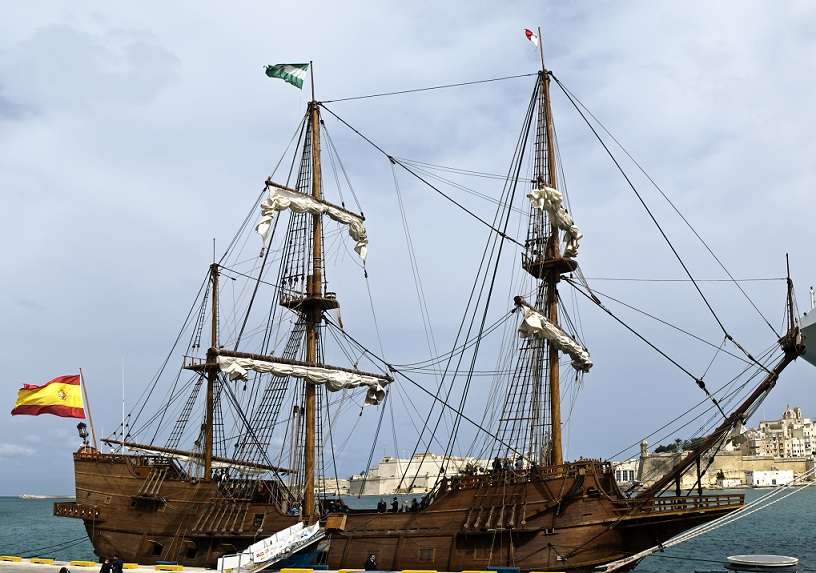Interested in the Spanish galleon? Discover the beautiful construction and use of the Spanish galleon ships…
A Spanish galleon was a huge and multi-decked sailing ship which was mainly utilized by European countries during the 16th to 18th centuries. They were used by seafarers for both commercial as well as military purposes.
They were almost always equipped with a specific type of cannon known as the demi-culverin. The main reasons for this were to either protect the ship from pirates or indulge in a military skirmish.
The Spanish galleon had evolved from the carrack and the caravel which were known as the nao in Spanish referring to a vessel. The forecastle was generally lower in height from that present in the preceding vessel and the hull was also much more elongated.
This led to a reduction in the wind resistance on the frontage of the ship and also increased the degree of stability in the sea. This resulted in a more maneuverable and faster moving vessel on the sea.
It differed from the later versions of the ship because it was lower, and narrower as well as longer in terms of its shape. The round tuck stern was replaced by a square tuck and below the forecastle you could see a snout projecting forward.
The galleons weighed less than 500 tons but the exception was the vessel’s falling into the Manila Galleons category, which weighed over 2000 tons. The Spanish galleons were heavily armed when they were utilized as military warships and were much stronger but cost much less.
In fact, they were cheap to build and approximately 5 Spanish galleons would be worth the same as three carracks. This made for a better investment for those interested in commercial and war vessels.
The best-known Spanish galleon was part of the Spanish treasure fleet. It’s interesting to note that the same ship which served a military mission could be utilized for commercial purposes by equipping it differently.
Spanish galleons had from 3 to 5 masts and were powered by sail only. The last mast would have a lateen on it and this was utilized as the basis for the creation of the rigged ships which eventually replaced the galleon.
In 1588 during a confrontation of the Spanish Armada, the English as well as Spanish warships were both galleons. The Spanish galleons were constructed for long sea journeys and had proven their durability in the wars and battles along with being resilient in large storms by their return home.
Most of them survived the ravages of both the war as well as the weather. The Spanish galleons were constructed with different types of wood including oak, hardwood and pine for durability.
They were carvel built while the keel was made off oak and the pine was used on the mast structure. The deck as well as the hull was crafted out of different hard woods.
It took a long time for carpenters, coopers, shipwrights and blacksmiths to craft one of the Spanish galleons. A group of tradesmen or businessmen would actually pool resources to develop a trade ship that could serve their needs.





